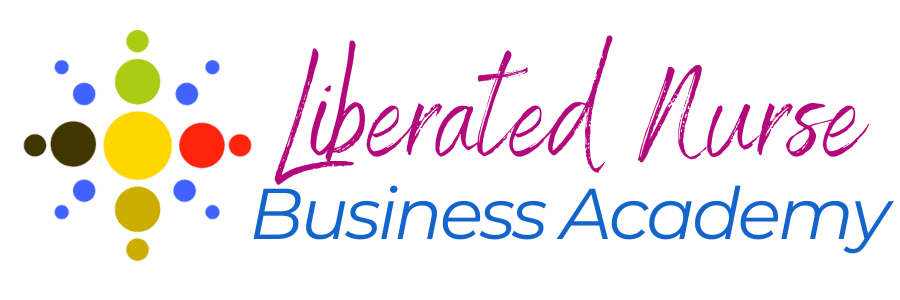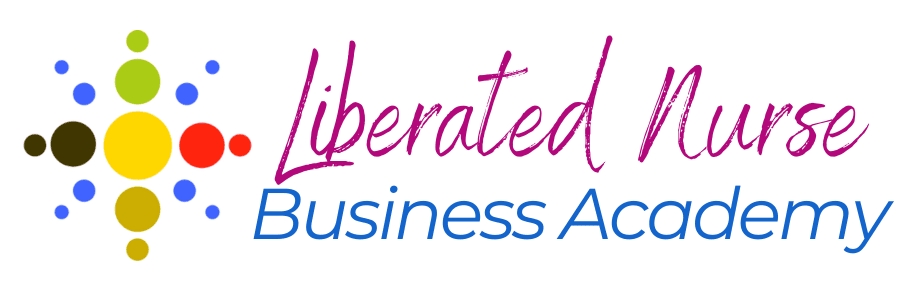Daniel Priestly is an award-winning entrepreneur, author, and founder of the entrepreneur accelerator Dent Global. He’s helped more than 5,000 entrepreneurs build successful companies in over 50 industries. These notes are from an interview with Steven Bartlett, a British entrepreneur, investor, and founder of the Diary of a CEO podcast. When I saw the video just six weeks after its launch, it had already had 2.4 million views! Click here to watch the full interview.
Daniel’s Process for Scaling a Business in One Year
Using logic, emotion, and urgency, make a 1:1 offer (e.g., private coaching or consulting: your most expensive service) that’s so powerful it fills and has a waiting list (aka “oversubscribed”).
Call the first round of 10-15 people a beta program or pilot test.
Expect to talk with 20 people to get one paying client and 200 people to get 10 clients.
Launch the offer in a different place every week until you’re full and have a waiting list.
Make a group offer so powerful that it becomes full with a waiting list. (e.g., group course)
Make a subscription offer so powerful that it becomes full with a waiting list. (e.g., community)
Invite people in these groups to move into the higher-priced group above theirs.
Daniel’s 5 Ps for the Successful Business Founder’s Role
Daniel recommends the following path for business founders to follow for business success. The Ps are steps listed in the order in which they should be taken.
Pitch your ideas and offers in a way that excites people and shows how you’re different from your niche mates... and expect to do it thousands of times!
Pitching is the ability to communicate your message in a way that engages and influences people to adopt your ideas. It is a vitally important strength for any leader or entrepreneur. If you have something of great value to offer but no one can understand it, you’re stuck. Throughout history, every great business, movement, or cause began with a powerful pitch.
Powerful pitching results in other people understanding you and getting excited. For that to happen, you need to understand how much value you have to offer. You need to understand the problems you solve and how they impact people better than anyone. Great pitching isn’t about having the right words; it’s about understanding and expressing your core value clearly.
Use this formula: If you think it’s about ____________________________________________, you’ve missed the point. It’s really about ___________________________________________.
Example: If you think it’s about DAYCARE, you’ve missed the point. It’s really about getting your child school-ready.
Publish thought leadercontent about your audience’s problem, your viewpoint about the cause, and how they can get through it. Use videos, blogs, email, books and audiobooks, podcasts, web pages, etc. (Refer to the 7-11-4 formula I described earlier.)
When you write, you create valuable “intellectual property” that can be used to spread a message, train your team, add value to your clients, or advance a line of thought.
Publishing your ideas in reports, blogs, articles, and books communicates important and necessary messages about you. It shows you have insights into your subject matter that are worth documenting.
Publishing communicates credibility; without credibility, you can’t achieve your vision. Conversely, a person with high credibility doesn’t need to say much, but what they do say carries a lot of weight. Being an author or a published writer in your industry massively increases your credibility.
Productize your ideas and skills. It’s hard to make a living today through in-person services alone. It’s okay to start that way, but it is also okay to generate significant income. You need to productize your service as soon as possible so you can reach more people in less time. Initially, use the Demo and Customer Needs Analysis approach I described above, then productize a follow-up offer that serves the same niche audience. Once those two offers can run without much time and attention from you, use your energy to increase visibility and demand for your product instead of delivering services yourself. There are two main types of products you need to develop:
High-Volume Products These products allow you to become known, liked, and trusted. They could be information products like ebooks, CD sets, DVDs, downloads, or physical goods that can be sold anywhere. This type of product is designed so that many new people can get an experience of you or your business. Create product package value consistently without requiring your personal involvement. When you can do that, you’ll have taken an important step toward becoming a Key Person of Influence.
High-Value Products These products must be “a full and remarkable solution, for a real problem, offered to a market who have the money to pay.” That may sound like a mouthful, but your high-value products must tick many boxes. You might not sell many of these products, but everyone wins when you do. PS: You don’t have to supply all the expertise. You can hire other people with skills that add value to your products.
Profile yourself and your cause by elevating your ideas “above the noise” and gaining visibility as a thought leader and person of influence. Use multiple media channels, speak from stages, win awards, etc., to increase your visibility and credibility.
A person with a strong online presence will clinch deals, whereas someone with a poor or no profile may raise questions for the other parties involved.
If you lack a recognizable profile, you must chase the customers, investors, and suppliers you need. It is much better to have a recognizable profile in your industry and attract opportunities. Then, you can curate the opportunities that arrive.
Fortunately, the digital world has made building a global profile within your niche cheaper and easier than ever, provided you follow a strategic approach.
Partnerships are strategic alliances with other people who can make things happen faster. Partnerships will stabilize and leverage your business. Successful people are well-connected. They focus on their strengths and form strategic partnerships with others who complement them. For example, Richard Branson has 150 companies inside the Virgin Group, mostly joint ventures and partnerships.
Partnerships can include joint ventures to increase reach and sales, capital partnerships to bring in investments, distribution partnerships to broaden or simplify your product distribution, and product partnerships to include more people’s expertise in your products.
Often, struggling people try to do everything themselves. They make the sales, deliver the work, manage the accounts, update their websites, and then wonder why they feel run down. Their illogical idea is to engage with partners and teammates after they become successful.
They are constantly seeking new people and organizations to help advance their vision. As soon as possible, they establish a core team, partner with investors for capital, partner with distributors, and form alliances with other well-known brands.
Many small business owners, leaders and managers are weighed down by an apparent lack of resources. Through the power of effective partnerships, you can access any resource on the planet.
A Key Person of Influence knows they don’t need to own everything or possess every skill set, but they do need to access the people who do.
By leveraging the skills, talents and resources of others, a Key Person of Influence is able to become highly valued through the connections they have.
Types of Partners
Affiliate Partners: These people are paid a commission to recommend or refer to your products and services. There are affiliate partner networks online where you can find potential affiliates for your product or service.
Brand Partners: These people or organizations make you look good. It could be celebrity endorsements, industry marquees, or prestigious institutions.
Operational Partners: These people or organizations assist you in delivering a better service to more people. These partners can help you perform the work you could not do alone.
Product Partners are organizations or individuals who supply additional products that add value to your business. They increase your capacity to deliver value and solve problems for your clients. Financial partners provide the financial resources you need to scale your enterprise. They have capital and are looking for exciting and safe places to earn a return.
Financial Partners: These people or organizations provide the financial resources you need to scale your enterprise. They have capital and are looking for exciting and safe places to get a return.
Where to Start
If you haven’t already read it, I recommend Daniel Priestley’s book “Entrepreneur Revolution.” It’s available in bookstores and on Audible. Click here to read my notes from Chapter 5: 10 Transformational Tasks That Are Essential for Your Success.
Begin by identifying your most valuable skills and the specific problems you can solve for your target audience.
Focus on developing a high-value, 1:1 offer (such as private coaching or consulting) that is so compelling that it creates a waiting list.
Use this initial offer as a beta program to refine your approach and gather feedback.
While working on this, start creating content that showcases your expertise and unique viewpoint. This can include blog posts, videos, or social media updates.
As you gain traction, productize your services into group offers and subscription models.
Simultaneously, start building your profile and seeking strategic partnerships to amplify your reach and resources.
Remember, the key is to transition from selling your time to creating intellectual property and scalable products that can eventually be sold as financial assets.
The Next Frontier
Within the next 10 to 15 years, every industry will have changed how it works by employing many AI applications and agents that crunch data to innovate effective solutions to problems. The best way to leverage this moment in time is to take three steps in the following order:
Move away from selling your time for money, which grows incrementally and barely keeps up with inflation, and into creating new thought leadership, intellectual property, and media.
You can do this by reflecting on your and others' experiences and identifying more effective ways to solve meaningful problems.
Then, communicate this through guides, images, videos, and other media.
Collect and organize data and create software that helps people get their desired results.
Package all that into a business that can be sold as a financial asset.
Conclusion
Daniel Priestly's insights offer a valuable roadmap for nurses and other healing arts professionals considering entrepreneurship. By building relationships, providing consistent value, and strategically targeting their ideal audience, nurses can leverage their expertise to create businesses that offer financial rewards, freedom, and fulfillment.
This framework, combined with an understanding of buyer behavior and the power of digital platforms, equips aspiring nurse entrepreneurs to thrive in today's evolving marketplace. Building thought leadership and creating intellectual property and software that helps people solve meaningful problems will be crucial as we look toward a future increasingly influenced by AI.
References
1 Salesforce (2022) ‘What are customer expectations, and how have they changed?’, www.salesforce.com/resources/articles/customer-expectations, accessed 31 May 2022.
Want to learn more about how you can prepare to start your own nurse-owned business?


